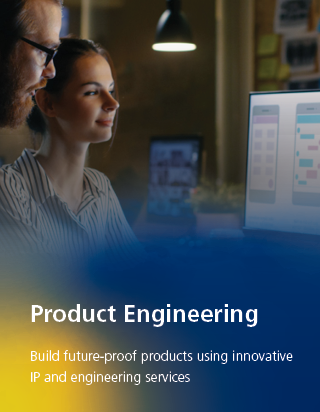Unlock Success with Comprehensive Engineering Support: Setting Out Engineer Services, Measured Structure Surveying, and Much more
Unlock Success with Comprehensive Engineering Support: Setting Out Engineer Services, Measured Structure Surveying, and Much more
Blog Article
Maximizing Resource Allowance Via Strategic Checking Practices
In the world of tactical source appropriation, the practice of surveying stands as an essential device for companies aiming to optimize their effectiveness and influence. By methodically collecting insights and data, tactical evaluating techniques supply a roadmap for notified decision-making and source circulation. With the lens of stakeholder engagement, these studies supply a method to take advantage of the diverse viewpoints and requires that form a company's landscape. Nonetheless, real power of calculated evaluating exists not simply in information collection, yet in the ability to transform this details right into actionable techniques that move a company towards its goals. With this lens, we start to unravel the detailed interaction in between surveying practices and source optimization, setting the stage for a deeper expedition of the methods and tactics that underpin this critical procedure.
Importance of Strategic Surveying Practices
Strategic evaluating methods play a critical duty in figuring out the reliable appropriation of resources within organizations. By carrying out critical surveys, firms can gather beneficial information and insights that help in making informed decisions pertaining to the allotment of resources such as time, spending plan, and workforce. These techniques offer an organized method to recognizing the existing state of the organization, determining locations for improvement, and straightening resources with critical goals.
One vital importance of calculated surveying methods is that they help organizations prioritize their initiatives based on real-time comments from stakeholders. This guarantees that sources are routed in the direction of projects or activities that have the greatest effect on achieving business purposes. Additionally, tactical surveys allow firms to adapt to changing market conditions, consumer choices, and interior abilities by continuously keeping an eye on and assessing source allotment methods.
Event Insights From Stakeholders
Integrating feedback from stakeholders is crucial for organizations implementing calculated checking techniques to successfully assign sources and drive decision-making procedures. Stakeholders, consisting of workers, consumers, vendors, and area participants, hold useful insights that can considerably impact the success of critical efforts. Engineering surveys. Engaging with stakeholders with surveys, meetings, emphasis teams, and feedback sessions permits companies to gain a much deeper understanding of their needs, preferences, and problems
By gathering insights from stakeholders, companies can recognize crucial areas for improvement, prioritize source allowance based upon real demands, and align critical objectives with stakeholder assumptions. Including stakeholders in the decision-making procedure promotes a feeling of possession and dedication, leading to increased buy-in and support for tactical efforts.
Additionally, stakeholders often use distinct viewpoints and ingenious ideas that may not have actually been considered inside. By proactively paying attention to and including stakeholder comments, companies can enhance their calculated surveying methods, make even more enlightened decisions, and inevitably achieve better outcomes.
Utilizing Data-Driven Approaches
Making use of data-driven methods is critical for companies looking for to boost the efficiency of their resource allocation methods and decision-making procedures. By leveraging data analytics and advanced innovations, organizations can remove valuable insights to maximize resource allowance, identify fads, and make educated decisions. Data-driven approaches allow companies to allot resources based on empirical evidence instead of intuition, leading to more efficient and efficient end results.

Moreover, organizations can employ anticipating analytics to anticipate future resource demands and allocate sources proactively. construction surveys. By leveraging historical information and pattern analysis, companies can anticipate need fluctuations and change their source allocation strategies appropriately. visit site Overall, accepting data-driven strategies equips organizations to make educated choices that make best use of source appropriation performance and drive sustainable growth
Identifying Locations for Improvement
To enhance functional performance and efficiency, organizations should prioritize determining crucial areas for renovation with rigorous analysis and analysis. Recognizing locations for improvement is a critical action in the process of maximizing source allocation. By recognizing where bottlenecks or ineffectiveness exist within the company, decision-makers can direct sources towards dealing with these certain locations. This targeted approach makes sure that efforts are concentrated on tasks that will certainly produce the greatest roi.
One efficient method for determining locations for renovation is conducting normal efficiency analyses throughout various divisions or features. Via these assessments, companies can gather important understandings into areas that require focus or restructuring. Furthermore, seeking comments from employees at all degrees of the company can offer an unique viewpoint on prospective areas for enhancement.
In addition, making use of devices such as procedure mapping, SWOT analysis, and benchmarking can help in recognizing areas for enhancement by highlighting strengths, weak points, opportunities, and dangers within the organization. By systematically checking out these variables, companies can establish a detailed understanding of where sources site web ought to be allocated to drive performance and performance.
Practical Tips for Execution

Conclusion
Finally, calculated surveying techniques play a crucial duty in making best use of resource appropriation by gathering understandings from stakeholders, utilizing data-driven techniques, and identifying locations for enhancement. Implementing functional ideas for reliable surveying can bring about more educated decision-making and maximized source allocation methods. By focusing on critical evaluating practices, organizations can make certain that resources are alloted effectively and effectively to satisfy their purposes and objectives.
In the world of tactical source appropriation, the practice of checking stands as a pivotal tool for organizations aiming to maximize their performance and influence.Strategic checking techniques play a crucial role in determining the efficient allocation of sources within companies.Integrating feedback from stakeholders is crucial for organizations applying critical checking techniques to successfully assign sources and drive decision-making procedures.Furthermore, organizations can utilize anticipating analytics to forecast future source requirements and allot resources proactively. By focusing on tactical checking techniques, organizations can make certain that resources are designated successfully and effectively to meet their goals and goals.
Report this page